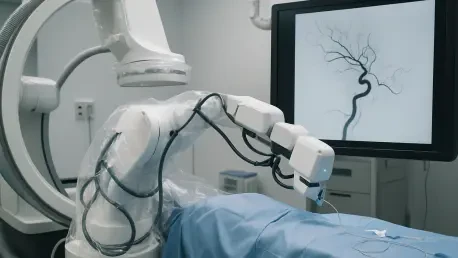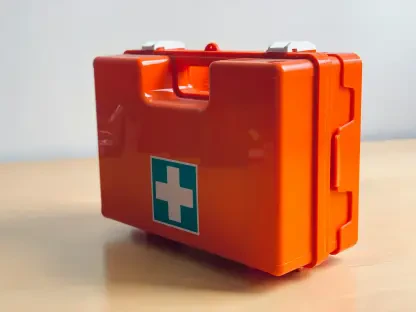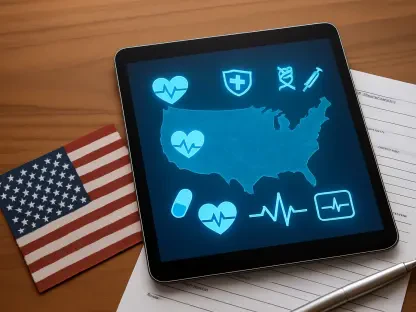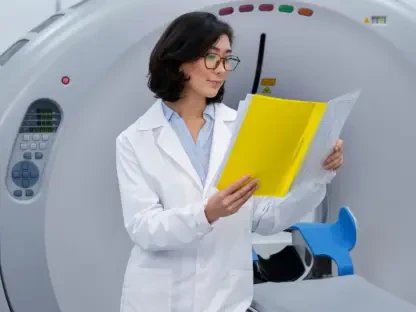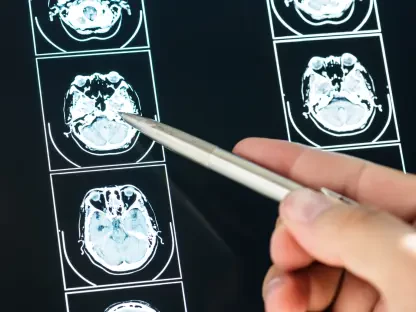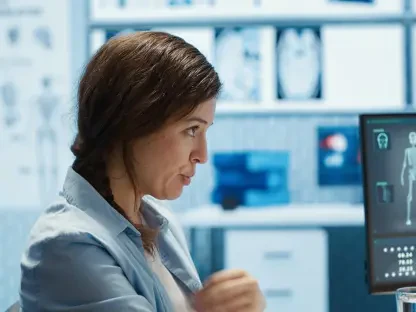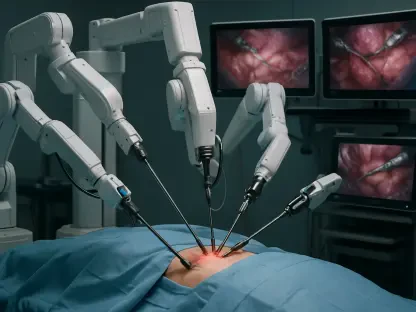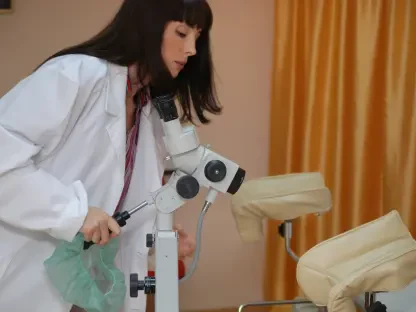In a world where every second counts during a medical emergency like a stroke, the integration of cutting-edge technology can mean the difference between life and death for countless patients across the globe. Two giants in the medical technology sector have recently joined forces to tackle this pressing challenge head-on, aiming to revolutionize the field of neurovascular interventions. This strategic collaboration focuses on developing an advanced robotic system that promises to enhance precision and speed in treating critical conditions such as strokes and aneurysms. By combining expertise in robotics, imaging, and neurovascular devices, this partnership seeks to address long-standing inefficiencies in emergency care. The initiative represents a significant step forward in leveraging automation to improve patient outcomes, setting a new benchmark for how technology can transform healthcare delivery in high-stakes scenarios. This alliance not only highlights innovation but also underscores a shared commitment to saving lives through smarter, faster medical solutions.
Pioneering a New Era in Neurovascular Care
The collaboration between these two industry leaders marks a pivotal moment in the evolution of neurovascular treatment, with a clear focus on integrating robotics into clinical practice. The primary goal is to create a seamless platform that merges advanced imaging technologies with robotic navigation and specialized devices, addressing the urgent needs of patients facing life-threatening conditions. This system aims to streamline complex procedures by enhancing accuracy and reducing the time required for interventions. Such improvements are particularly critical in emergency situations where delays can lead to irreversible damage. By minimizing variability in outcomes, the initiative seeks to provide clinicians with tools that reduce both physical and mental strain during high-pressure scenarios. The emphasis on precision and efficiency reflects a broader vision to redefine standards in medical care, ensuring that patients receive the most effective treatment possible when time is of the essence.
Beyond the technical advancements, this partnership highlights a strategic alignment to overcome traditional barriers in neurovascular interventions. Historically, these procedures have relied heavily on manual techniques, often leading to inconsistent results due to human limitations and workflow challenges. The introduction of a robotic ecosystem promises to mitigate these issues by automating key aspects of the process, allowing for greater consistency across cases. Additionally, the integration of real-time imaging ensures that physicians can make informed decisions with unparalleled clarity during operations. This synergy of technology not only empowers healthcare providers but also instills confidence in the reliability of outcomes for patients worldwide. As the system develops, it could set a precedent for how automation reshapes emergency medical responses, potentially influencing other areas of healthcare where precision and speed are paramount.
Industry Trends and Transformative Potential
A noticeable shift is occurring within the healthcare sector, where robotics is increasingly viewed as a transformative force in medical interventions. This collaboration exemplifies a growing consensus that technology-driven solutions, particularly those combining automation and advanced imaging, are essential for the future of patient care. Experts in the field have expressed optimism about the potential of such partnerships to redefine procedural norms, especially for conditions like strokes and aneurysms that demand rapid action. The focus on creating integrated ecosystems—where devices, imaging, and robotic systems work in harmony—aligns with an industry-wide push toward precision medicine. This trend underscores a collective belief that reducing procedural variability through automation can significantly elevate the quality of care, paving the way for more predictable and successful outcomes in critical situations.
The implications of this initiative extend far beyond individual procedures, signaling a broader movement toward adopting robotics on a global scale. By setting a new standard in neurovascular care, the partnership could accelerate the acceptance of robotic-assisted interventions among healthcare providers. Analysts predict that successful implementation might inspire similar innovations across various medical disciplines, further embedding technology into everyday clinical practice. The emphasis on improving patient outcomes through faster, more accurate treatments highlights the life-saving potential of this approach. Moreover, the collaboration serves as a model for how strategic alliances can address complex challenges in healthcare, fostering an environment where innovation thrives. As the industry continues to evolve, such efforts are likely to shape the trajectory of medical technology, ensuring that advancements prioritize both efficacy and accessibility for patients around the world.
Strategic Roadmap and Implementation Goals
The scope of this partnership is outlined through a carefully structured, phased approach to development and deployment. Initially, efforts are concentrated on designing a robust robotic ecosystem that seamlessly integrates devices and imaging workflows while conducting rigorous clinical validations with leading physicians. This foundational stage is crucial for ensuring that the technology meets the stringent demands of real-world medical environments. By prioritizing precision and usability, the collaboration aims to create a system that can be confidently adopted by healthcare professionals. The focus on early testing and refinement reflects a commitment to delivering a reliable solution that addresses the unique challenges of neurovascular interventions, ultimately enhancing the standard of care provided to patients in critical need.
Looking ahead, the long-term vision includes expanding commercial infrastructure and establishing comprehensive education programs for providers to facilitate widespread adoption. Plans also involve developing reimbursement pathways to make the technology accessible to a broader range of healthcare facilities. This multi-faceted strategy demonstrates an understanding that innovation alone is not enough; practical implementation and support are equally vital for success. By equipping clinicians with the necessary training and resources, the partnership seeks to ensure that the benefits of robotic systems are realized across diverse settings. The ultimate goal is to make robotic-assisted procedures a mainstream option in neurovascular care, transforming how emergency treatments are delivered and improving survival rates for patients facing severe conditions like strokes.
Reflecting on a Groundbreaking Alliance
Looking back, the alliance between these two medical technology powerhouses stood as a defining moment in the journey toward advanced neurovascular care. Their combined efforts to integrate robotics, imaging, and specialized devices tackled critical gaps in emergency treatment, setting a high bar for procedural efficiency. The initiative mirrored a wider industry shift toward precision medicine, driven by automation and technological synergy. Improved patient outcomes and streamlined clinical workflows emerged as key achievements, underscoring the life-saving impact of faster interventions. As the partnership unfolded, it paved the way for broader adoption of robotic systems in healthcare. Moving forward, stakeholders are encouraged to monitor how this collaboration influences global standards, while exploring opportunities to adapt similar innovations to other medical fields. The focus remains on scaling access to such technologies, ensuring that more patients benefit from cutting-edge solutions in the years ahead.
